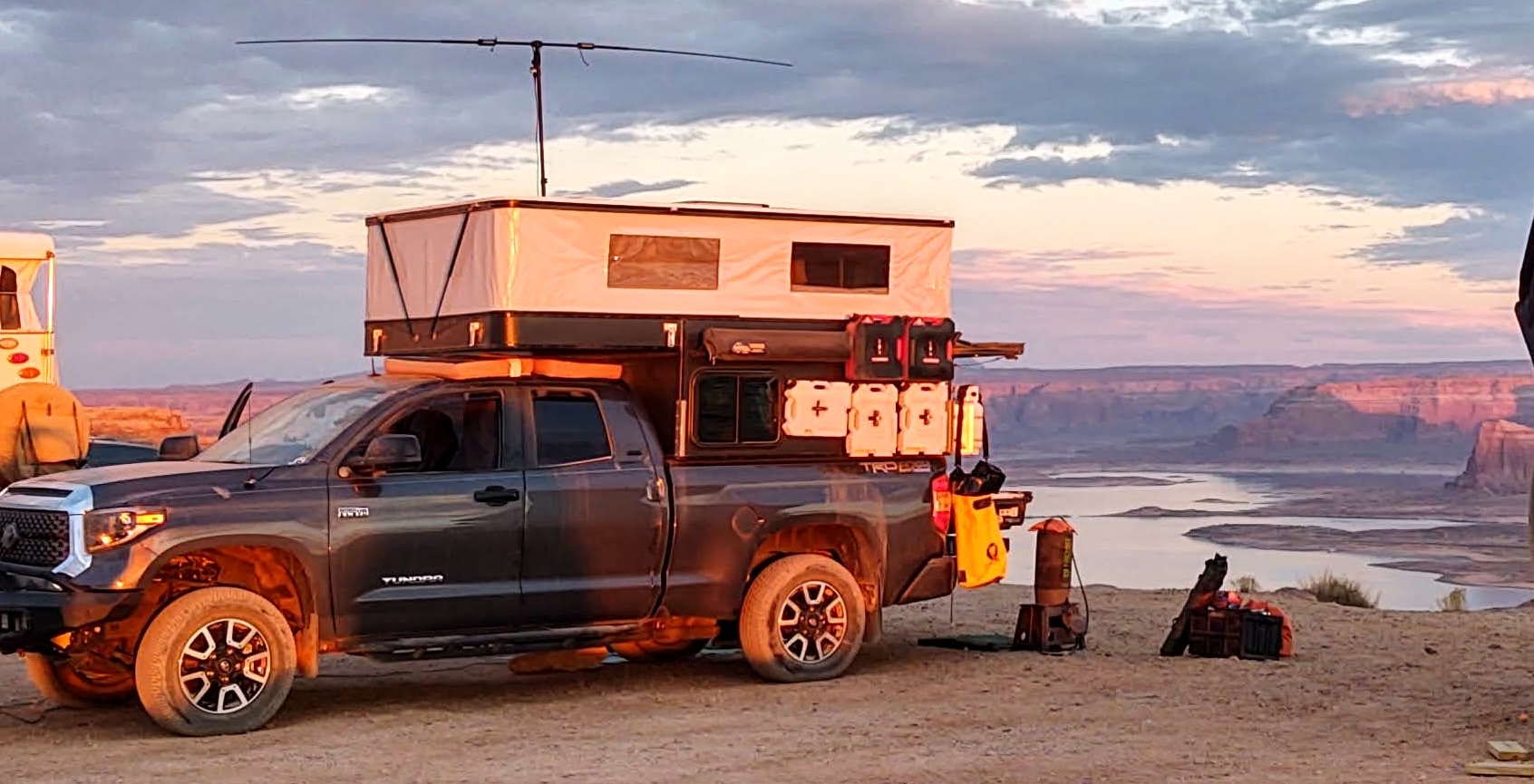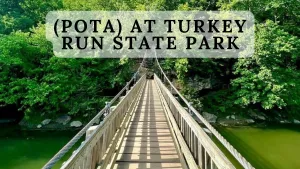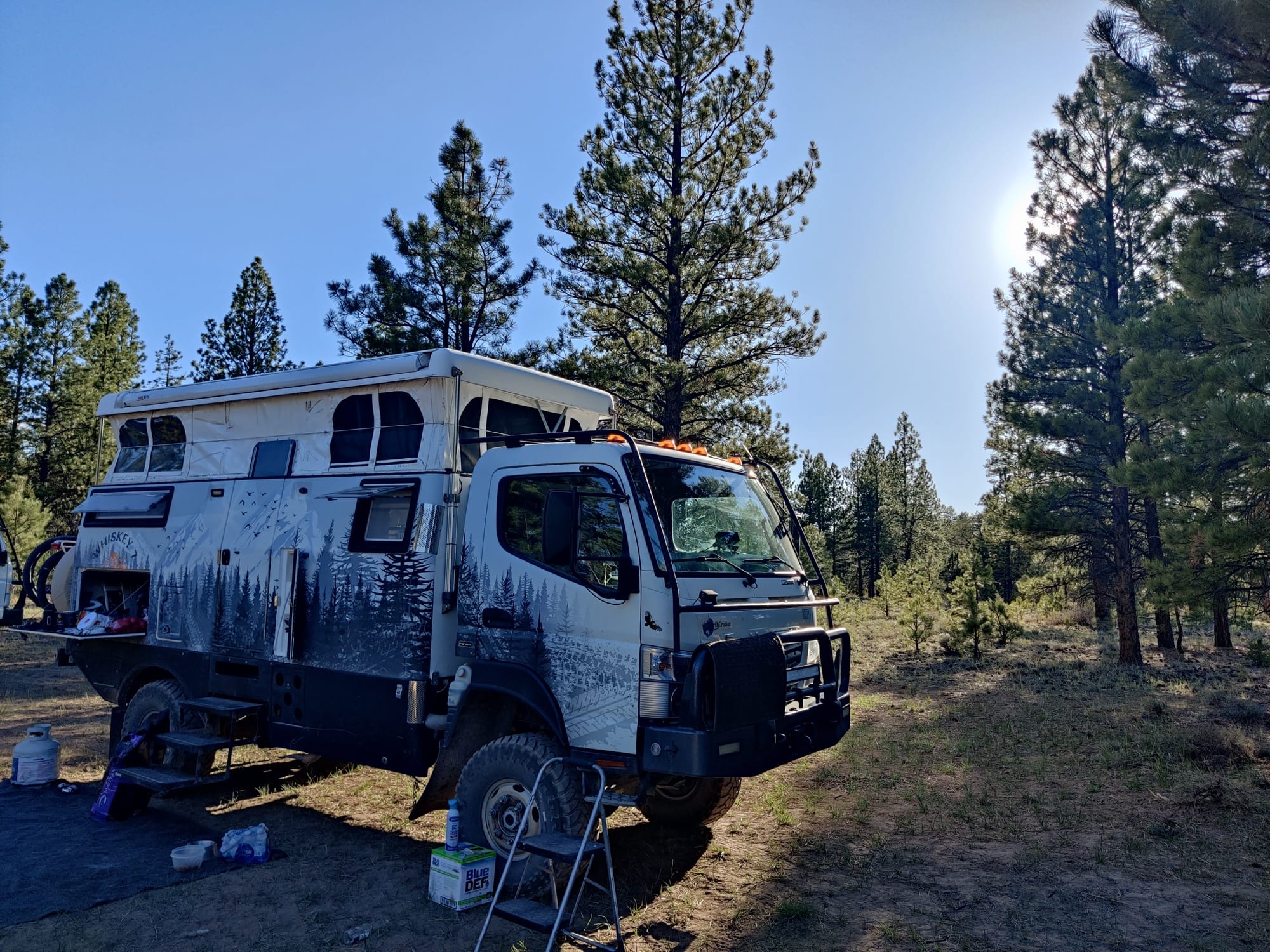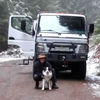By immersing yourself in the natural beauty and recreational offerings of Turkey Run State Park, you can enjoy a fulfilling Parks on the Air (POTA) experience while creating unforgettable memories amidst Indiana's scenic landscapes.
Parks on the Air (POTA) offers a unique blend of outdoor adventure and amateur radio, providing an engaging way for participants to enhance emergency awareness and communications skills from scenic state parks. As an internationally recognized program, POTA underscores the seamless integration of Morse code, communications, and the beauty of national parks, fostering a vibrant community through various platforms including Facebook, YouTube, and MeWe. This initiative promotes the heritage of amateur radio and encourages the exploration of natural reserves, such as Indiana's picturesque Turkey Run State Park.
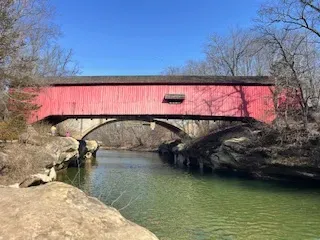
Embarking on a POTA adventure at Turkey Run State Park combines the thrill of successful amateur radio operation with some exploration of the park's stunning natural beauty. This article aims to encourage enthusiasts to try out POTA and to give an understanding of the foundational principles to navigating the specific challenges and excitements of activating a park. Whether you're a seasoned amateur radio operator or new to the world of POTA, this article will provide invaluable insights into making the most of your experience at Turkey Run.
What is POTA?
Parks on the Air (POTA) is an innovative activity that intertwines the thrill of amateur radio with the serene beauty of parks across the United States and beyond. At its core, POTA aims to encourage radio operators, both seasoned and newcomers, to set up their equipment in federal or state-run parks and engage in two-way communications with other amateurs. This activity is not limited by location, as participants, known as "hunters," attempt to make contact with "activators" operating within these parks from anywhere around the globe, including distant stations (DX) or those within the US.
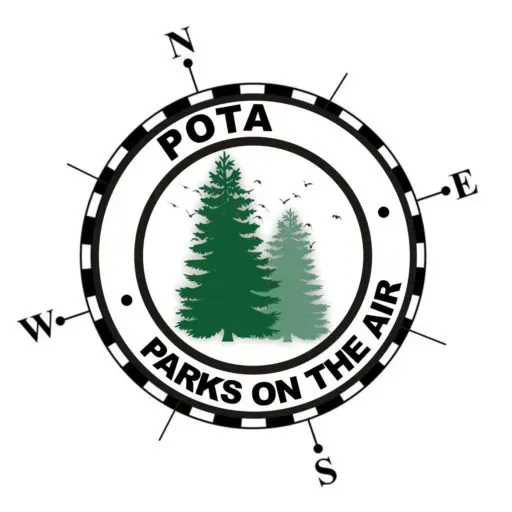
Key Components of POTA:
Activators and Hunters: Activators are individuals who visit parks to operate their amateur radio equipment. The goal is to establish communication with at least 10 other amateurs. Hunters, on the other hand, are those who try to establish contact with the activators from any location, adding a layer of excitement and challenge to the activity.
Modes and Operations: POTA is inclusive in its approach, allowing participants to use any mode of transmission, band, and power level. This flexibility ensures that anyone interested in amateur radio can participate, regardless of their equipment or license class.
Community and Awards: Beyond being a mere activity, POTA has fostered a vibrant community of over 500,000 unique hunter call signs. It offers an awards program to recognize the achievements of its participants, further motivating them to explore new parks and enhance their communication skills. The program also provides advanced tools for spotting and hunting amateurs, making the activity accessible and enjoyable for everyone.
Check out our friend Jason @HamRadio2.0 above as he explains what POTA is on his YouTube channel. POTA transcends being just a radiosport; it's an adventure that promotes emergency awareness, fosters a sense of community among amateur radio enthusiasts, and encourages the exploration of the natural beauty found in parks worldwide. With its low-cost entry, supportive community, and the thrill of competition without the pressure of a contest, POTA stands out as a unique and rewarding experience for amateur radio operators.
Exploring Turkey Run State Park
Turkey Run State Park, nestled in Parke County, Indiana, is a haven for families and outdoor enthusiasts seeking adventure amidst nature's beauty. The park's diverse landscape is matched by an equally varied range of activities, ensuring visitors of all ages and interests find something to enjoy.
Accommodations and Amenities:
Turkey Run Inn: Offers comfortable lodging with an on-site restaurant, and both indoor and outdoor pools, ensuring a relaxing stay after a day of exploration. The inn also features a game room, perfect for family entertainment.
Camping and RV Rentals: For those who prefer a more rustic experience, the park provides campgrounds and RV rental options, allowing visitors to immerse themselves in the natural surroundings.
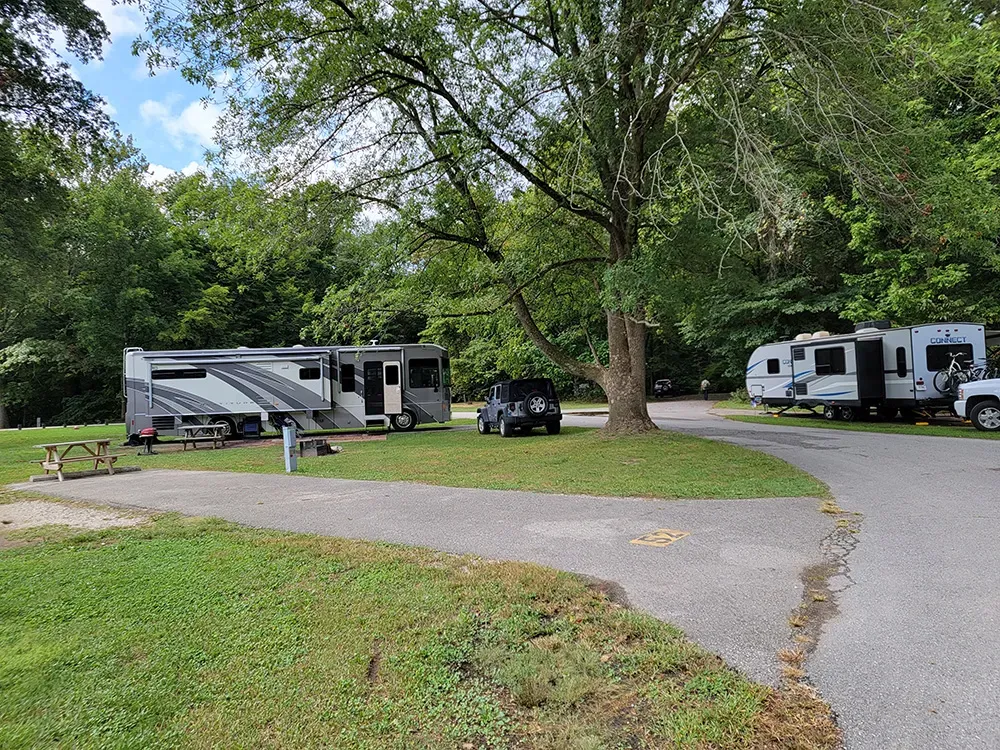
Activities and Attractions:
- Hiking Trails: Over 14 miles of trails ranging from easy to very rugged, including the famous Trail 3 with ladders, a suspension bridge, and a covered bridge, offer an unparalleled hiking experience.
- Nature Center: A hub for learning about the park's rich history, geology, and wildlife. It features interactive exhibits, educational programs, and a gift shop for souvenirs.
- Falls Canyon and Rocky Hollow Falls Canyon Trail: These areas are must-visits for their stunning waterfalls and the challenging 1.5-mile loop trail that leads to them, ideal for hiking, photography, and picnicking.
- Water Activities: The park offers tubing, canoeing, and kayaking on Sugar Creek, with equipment available for rent. Fish Creek is another great spot for fishing and canoeing, adding to the park's appeal for water enthusiasts.
Historical and Natural Significance:
- Historic Areas: The park houses several historic sites, including an old pioneer cabin and a grist mill, offering a glimpse into the past.
- Flora and Fauna: Home to a variety of tree species such as the rare Tulip tree, Hemlocks, and more, the park is a biodiversity hotspot. The Nature Guide Service provides daily guided tours, silent nature trails, and evening lectures to help visitors appreciate these natural and historic features.
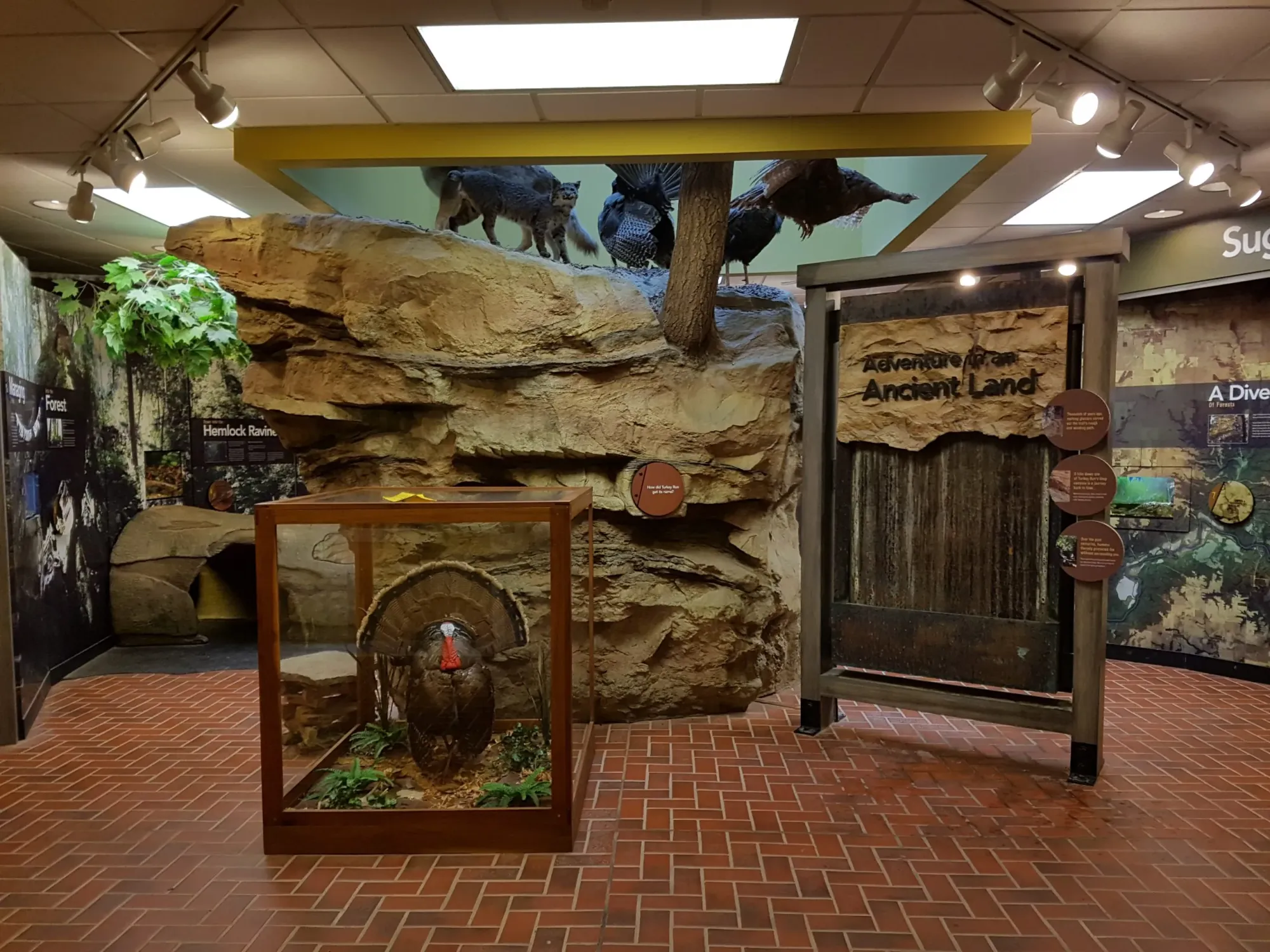
Turkey Run State Park, established in 1916 as Indiana's second state park, continues to be a cherished destination for those seeking to connect with nature and history. With its scenic beauty, array of activities, and educational opportunities, it stands as a testament to the enduring appeal of America's natural parks.
POTA Experience at Turkey Run
I had the good fortune of having an extended layover on July 4th, 2023, which allowed me to go hiking in two state parks and recreation areas before heading to Europe. As you might recall from my previous articles, I enjoy participating in Parks On The Air (POTA) and Summits On The Air (SOTA) activities, and I've also been working on improving my Morse code (CW) skills. It's been a challenging but rewarding journey, as learning Morse code is akin to learning a new language
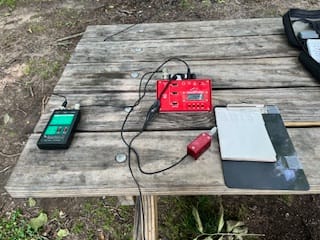
LNR radio
I brought my newly acquired LNR Precision MTR4b Mountain Topper radio. This radio can operate on 20, 30, 40, and 80 CW frequencies, with a 5-watt output. LNR Precision is an American company based in North Carolina. Mountain Topper radios are released in small numbers as components become available. The LNR radios are highly sought after within the backpacking and SOTA communities.
The radio doesn't come with a built-in tuner, meaning you'll need either a resonant antenna or an external antenna tuner. In my situation, I opted for the latter and utilized the Elecraft T1 tuner. It allowed me to make the PackTenna 9:1 EFHW random wire antenna resonant—any of the four bands that can be selected on the radio. The MTR4b was powered using a Lithium Ion 11.0v two 6-ah battery pack.
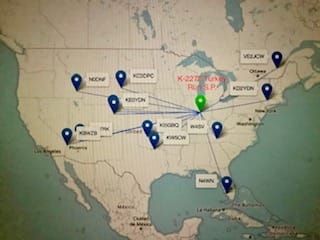
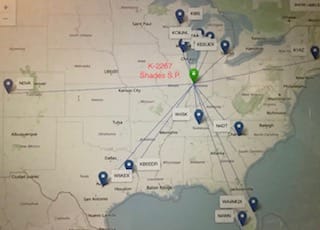
Contacts made from Turkey Run and Shades State Parks
It was a successful activation of Park K-2272 as I logged 12 contacts. The farthest away was Arizona, Florida, and Montreal, Canada. I also activated K-2257 Shades State Park and made another 13 contacts. I prefer to log my contacts using paper and pencil. However, I use HAMRS as my application to upload my activations to the POTA/SOTA websites. There are several advantages to using HAMRS, such as its simplicity, its Adi format interface for file upload, and the ability to view a map of the contacts made
Challenges and Excitements
To enhance the Parks on the Air (POTA) experience and tackle inherent challenges, participants and organizers have devised practical strategies and suggestions. These insights not only aim to improve the overall engagement but also address specific technical and operational issues encountered during activations.
Strategies to Improve Callers and Personalize Experience:
- Adjusting Speeds: One method to attract more callers is by trying slower Morse code speeds. This approach can make it easier for less experienced operators to participate, thereby increasing the number of successful contacts.
- Personalization of Contacts: Creating a list of frequently-worked callsigns and names can significantly personalize the contacts made during activations. This gesture fosters a sense of community and can encourage repeat contacts, enhancing the overall POTA experience.
Technical Solutions and Communication Enhancements:
- RFI Issues: Radio Frequency Interference (RFI) is a common challenge that can impede clear communications. A practical solution found by participants is the switch to headphones, which can mitigate RFI issues and improve the clarity of transmissions.
- Real-time Communication: The introduction of a messaging feature on the POTA app for real-time communication between logged-in users has been suggested. This feature would facilitate direct interaction among participants, allowing for instant feedback, coordination, and enhanced engagement during activations.
These strategies and solutions highlight the dynamic nature of the POTA community, where continuous improvement and adaptation are key to overcoming challenges and maximizing the excitement of amateur radio activations in parks.
Must-Visit Spots Within Turkey Run
Turkey Run State Park is a treasure trove of natural beauty and historic significance, offering visitors a plethora of spots that are a must-visit during their time in the park. Here's a concise guide to ensure you don't miss out on what this magnificent park has to offer:
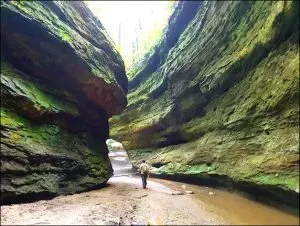
Trails to Explore
- Trail 3 & Trail 4: Known for their rugged terrain and scenic beauty, these trails offer an immersive experience into the park's natural landscape.
- Trail 8: Provides a unique adventure with its challenging paths and the opportunity to witness the park's diverse flora.
- Trail 6 and Trail 10: Perfect for those seeking a less strenuous hike, these trails still offer the full beauty of Turkey Run State Park with easier access.
Natural Features
- The Punch Bowl: A geological marvel that captivates visitors with its unique formation.
- Flora: The park is home to an array of plant life including Stinging Nettle, Wild Ginger, May Apple, and Sassafras, each adding to the park's vibrant ecosystem.
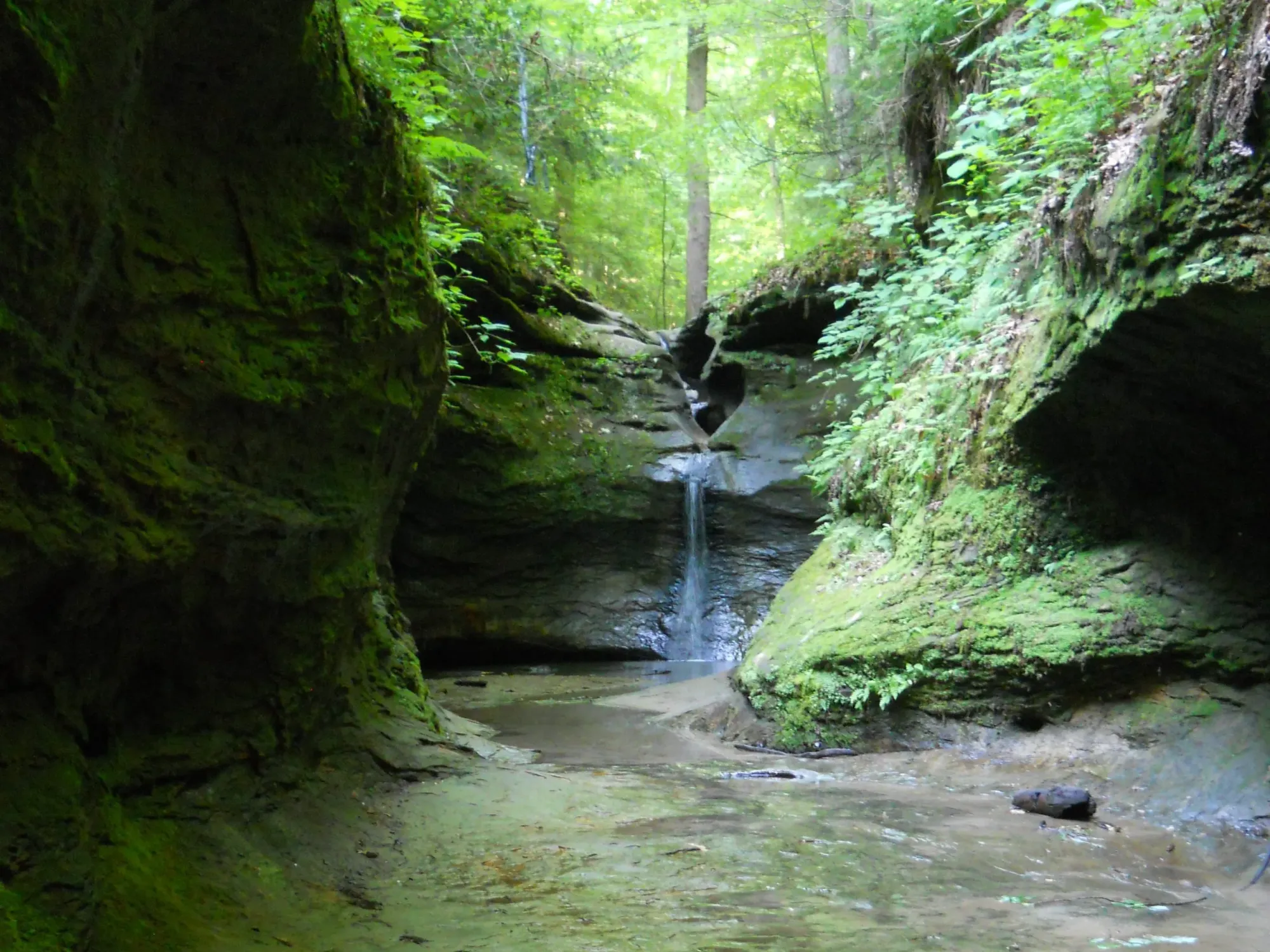
Facilities and Historical Sites
- Shelter House and Turkey Run State Park Lodge: These facilities offer visitors a place to rest and gather, providing comfort amidst the wilderness.
- Turkey Run Campground: For those looking to extend their stay, the campground provides excellent amenities to make camping in the park a memorable experience.
- Historical Insights: The park's history is rich with tales of the past, including a private coal mine once used for the Salmon Lusk house, adding a layer of historical intrigue to your visit.
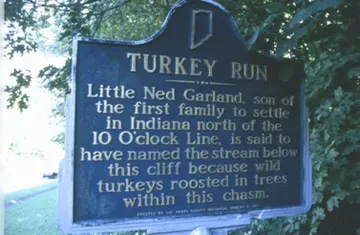
By ensuring you visit these highlighted spots within Turkey Run State Park, you're guaranteed an enriching experience that combines the thrill of exploration with the serenity of nature and a dash of historical knowledge. Whether you're traversing its challenging trails, marveling at its natural formations, or resting at its cozy facilities, Turkey Run promises an adventure that's both exhilarating and enlightening.
Conclusion
Through this exploration of Parks on the Air (POTA) activations at Indiana's enchanting Turkey Run State Park, we've journeyed across a spectrum of activities that blend the rich tapestry of amateur radio with the intrinsic beauty and tranquility of natural landscapes. From the foundational principles of POTA to the specific challenges and exhilarations of activating Turkey Run, this guide has aimed to provide both novices and seasoned operators with valuable insights into making the most out of their amateur radio adventures in the great outdoors. The significance of these experiences underscores not just the thrill of amateur radio sports, but also the deeper connection they foster with our natural heritage and the vibrant community that surrounds them.
Moreover, the collective adventure of POTA at Turkey Run reflects the broader implications of such activities for emergency awareness, community building, and personal growth within the realms of nature conservation and technological literacy. As enthusiasts and curious minds alike consider stepping into or continuing their amateur radio journey, the importance of preparation, engagement, and adherence to best practices cannot be overstated. For those inspired by the journey and looking to dive deeper into the world of Parks on the Air, or simply wish to join a community of like-minded individuals, we encourage you to sign up to our website and embark on your own POTA expedition. Together, we can continue to celebrate and preserve the natural wonder that parks like Turkey Run State Park represent, all while pushing the boundaries of amateur radio further into the wild.
Carlos O'Neil
